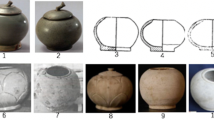Abstract
Nagasaki served as one of the important port polities during the modern period in Asia. The relation between Manila and Nagasaki remained a short period since Japan decided to close the country in 1639. Indeed, the Manila-Nagasaki trade was practiced from 1570 to 1639. Nagasaki’s presence meant little to Manila though there are some interesting aspects such as migration, art influence to New Spain via Manila, and Japanese ceramic trade (Reid 1993).
Access this chapter
Tax calculation will be finalised at checkout
Purchases are for personal use only
Similar content being viewed by others
References
Chia, L. (2006) The butcher, the baker, and the carpenter: Chinese Sojourners in the Spanish Philippines and their impact on Southern Fujian (Sixteenth-Eighteenth Centuries). Journal of the Economic and Social History of the Orient, 49(4), Maritime Diasporas in the Indian Ocean and East and Southeast Asia, 509–534.
Kuwayama, G. (1997). Chinese ceramics in Colonial Mexico. Hawaii University Press.
Miyata, E. (2017a). Portuguese intervention in the Manila Galleon Trade. Archaeo Press.
Miyata, E. (2017b). Manila Galleon Trade-Chugokutoji no Taiheiyoukouekiken. Keio Gijukudaigaku Shuppankai.
Ohashi, K. (2004). A study of the Ceramic trade at the Tirtayasa Site, Banten, Indonesia: The Strategic Point through the Ocean Silk Road. Bulletin of the Research Center for Silk Roadology, 20.
Reid, A. (1993). Southeast Asia in the Age of Commerce 1450–1680: Expansion and Crisis (Vol. 2). Yale University Press.
Rinaldi, M. (1990). Kraak Porcelain, a moment in the history of trade. Bamboo Publishing.
Cataogues
The BinhThuan Shipwreck, Christie’s Australia, 2004.
The Fort San SebastianWreck: A 16th century Portuguese Wreck off the Island of Mozanbique, Christie’s Amsterdam, 2004.
Nossa Senhora dos Mártires, The Last Voyage, Verbo, 1998.
Saga of San Diego, National Museum of the Philippines, 1993.
Author information
Authors and Affiliations
Corresponding author
Editor information
Editors and Affiliations
Rights and permissions
Copyright information
© 2019 Springer Nature Singapore Pte Ltd.
About this chapter
Cite this chapter
Miyata, E. (2019). Ceramics from Nagasaki: A Link to Manila Galleon Trade. In: Wu, C., Junco Sanchez, R., Liu, M. (eds) Archaeology of Manila Galleon Seaports and Early Maritime Globalization. The Archaeology of Asia-Pacific Navigation, vol 2. Springer, Singapore. https://doi.org/10.1007/978-981-32-9248-2_9
Download citation
DOI: https://doi.org/10.1007/978-981-32-9248-2_9
Published:
Publisher Name: Springer, Singapore
Print ISBN: 978-981-32-9247-5
Online ISBN: 978-981-32-9248-2
eBook Packages: Literature, Cultural and Media StudiesLiterature, Cultural and Media Studies (R0)




